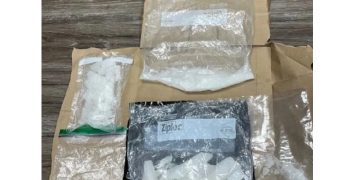Monroe County, Indiana – All K-12 students in Monroe County Community School Corporation can return to school buildings Sept. 8.
In the “phase yellow” plan the school board approved Tuesday, preK-6 students will attend school in person every day. Middle schoolers and high schoolers will follow a hybrid model — half in person and half online. Community Based and Bridges special education students will return to classrooms Monday full time, and Hoosier Hills students will begin a blended hybrid model.
“If there is any district that can open safely, MCCSC can do that,” assistant superintendent Andrea Mobley said.
The district could begin its “phase green,” or daily in-person instruction for all students, as soon as Sept. 21. In both phases, families can choose to continue learning completely online.
MCCSC has offered only virtual learning since its first day of school Aug. 12.
Superintendent Judith DeMuth said the move to add an in-person option partly stems from a funding threat. Earlier this month, Indiana Senate President Pro Tem Rodric Bray warned schools could lose 15% of state funding if they don’t open for in-person instruction this year.
A committee focusing on the county’s COVID-19 case metrics will meet weekly starting Sept. 14 to evaluate bringing all students back full time, focusing primarily on Monroe County’s percent positivity rate.
The Metric Committee will look for a less than 5% positivity rate over seven days to shift to the final stage of the district’s reopening plan. Committee members will also watch for a downward trend in positive cases per day and a test turnaround and contact tracing timeline of less than two days.
In the blended model for phase yellow, middle school and high school students will receive recorded lessons and completely independent activities on their remote learning days. But students of any grade who elect to continue online instruction will connect daily with a teacher from their neighborhood school.
DeMuth said school leaders planned to accommodate the number of students who enrolled last year, recognizing many would elect to stay home. Safety precautions in buildings will include spots on the floor that show students how to practice social distancing, time for hand-washing built into schedules and required mask-wearing. Schools will also use outdoor spaces and add tents if the campus doesn’t have a shaded area.
Dr. Scot Moore, a local pediatrician on the district’s metric committee, said the precautions MCCSC has prepared follow guidelines from the Centers for Disease Control and Prevention well.
“Waiting for a risk-free time to return to the classroom is unattainable any time soon,” Moore said.
Local pediatrician Dr. James Laughlin, who is also on the Metric Committee, agreed bringing students back to classrooms is “imperative.”
“This is a total emotional, physiological, mental health, educational agenda that we can’t miss out on with our kids,” he said.
Board member Sue Wanzer said she was prepared to vote against the plan and ask to keep school buildings closed until she heard these speakers and reports. She said she was troubled by how the decision could affect teachers but cared more that the district provides equitable access to education.





















